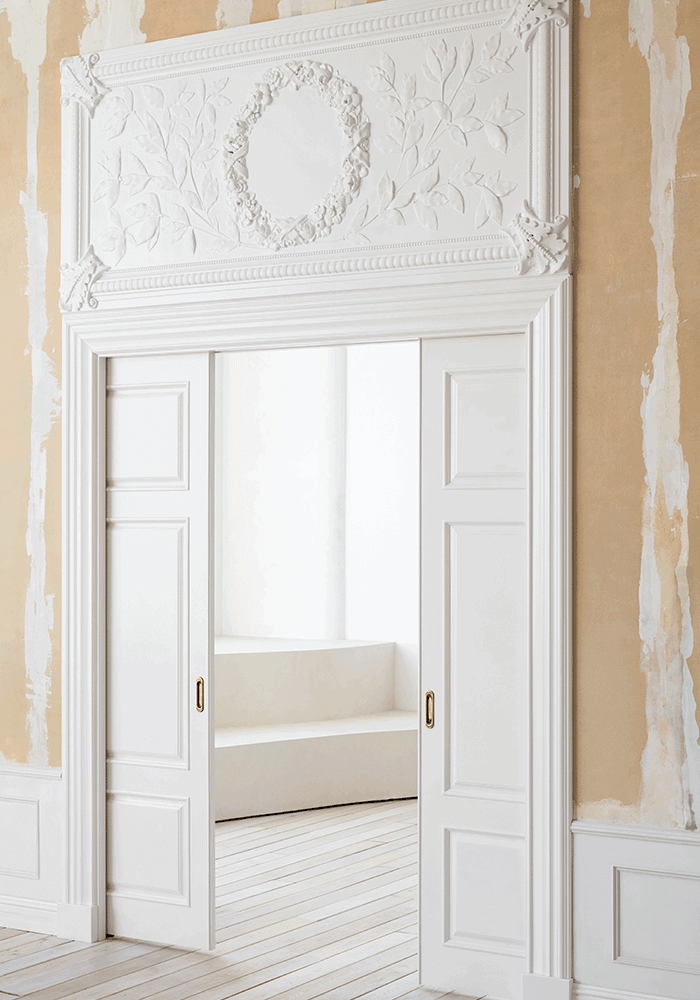Gypsum in construction
Gypsum is a versatile construction material that has both advantages and disadvantages. Gypsum boards can easily achieve various element designs of architectural requirements. And they offer high performance, ease of application and repair, and adaptability in all kinds of decoration.
Different types of gypsum used in construction
Gypsum is a widely used construction material that has different types and uses. Below are the types of gypsum used in construction.
Gypsum Plaster Boards: Plasterboard is a panel used as partitions and for the lining of walls and the ceilings. It is a prefabricated unit, like gypsum board which is bought at the time of installation.
Decorative Plaster: Dehydrated plaster powder, mixed with water, is used to line brick and block walls and ceilings. as well as for elaborate and beautiful decorations. This gypsum plaster is widely known as plaster of Paris. And has been used by craftsmen for thousands of years to create decorative mouldings and models.
Backing Gypsum: The backing gypsum comprises various layers in the construction process. where several layers of gypsum boards are utilized as a soundproofing material to give the walls strength and fire resistance. Walls and ceilings are covered with backing gypsum boards, also used for self-leveling screeds.
Gypsum Blocks: Gypsum blocks can be used in a similar fashion to concrete blocks for building.

In conclusion, gypsum has different types used in construction, including gypsum plaster boards, decorative plaster, backing gypsum, and gypsum blocks. Gypsum is used for various purposes, such as wall installation, ceiling, under stairs, roofing, and lightweight and durable walls. It is preferred compared to concrete blocks and bricks due to its excellent properties and relatively low cost.
Gypsum board usage
One of the most used gypsum products is gypsum board. Gypsum board, also known as drywall, is a popular construction material used for walls and ceilings. It is made of a non-combustible gypsum core with paper surfacing front, back, and long edges. The surface can be wrapped in various materials, including paper and fiberglass matting.
Gypsum board has different types, including regular gypsum board, type X gypsum board, and decorative gypsum board. It is used for various purposes, such as wall installation, ceiling, under stairs, roofing, and lightweight and durable walls. Gypsum board is also useful in building houses, office buildings, factories, and hospitals. It is preferred compared to concrete blocks and bricks due to its excellent properties and relatively low cost.
Types of Gypsum Board
There are different types of gypsum boards used in construction, each with its own unique properties and uses. Below are the types of gypsum board.
Regular Drywall or White Board. This is the most common type of drywall used in homes and is suitable for most rooms. It is made of gypsum, but it does not feature special mold and mildew resistance. Like other types that are durable in moist areas.
Greenboard Drywall. This type of drywall has a green covering that makes it more resistant to water than regular drywall. It is made of the same materials as regular drywall, but its paper covering is coated in wax.
Fire-Resistant Gypsum Boards. These boards are designed to offer increased fire resistance in drywall applications, where desired or where required by code. Type X Drywall is one such product.
Water-Resistant Gypsum Board. This type of gypsum board is more resistant to water than regular drywall. And is suitable for use in areas with high humidity or moisture, such as bathrooms and kitchens.
Backing Gypsum Board. This type of gypsum board is used as a soundproofing material to give the walls strength and fire resistance. Walls and ceilings are covered with backing gypsum boards, also used for self-leveling screeds.
Exterior Gypsum Sheathing. This type of gypsum board is used for exterior walls and is made with a thin fiberglass mat facing. which resists water and board deterioration better than treated paper faces.
Abuse and Impact Resistant Drywall. This type of gypsum board is designed to withstand abuse and impact, making it suitable for high-traffic areas. Such as schools, hospitals, and commercial buildings.
Each type has its own unique properties and uses, making them suitable for different applications in construction.
Pros and cons of gypsum in construction.
Gypsum is a popular construction material that is used in various applications. Below are the pros and cons of using gypsum in construction.
Advantages of Gypsum in Construction.
Versatility: Gypsum boards can easily achieve various element designs of architectural requirements. They offer high performance, ease of application and repair, and adaptability in all kinds of decoration.
Fire Resistance: Gypsum is a fire-resistant material and can hold fire for up to three hours. adequately protecting other structural elements for a certain period of time.
Low Thermal Conductivity: Gypsum plaster offers low thermal conductivity, making it great for saving heating and cooling costs in building.
Easy to Install: Gypsum installation is extremely easy and fast. Available in lengths of 8, 10, or 12 feet and in width of 48 inches. it allows covering larger areas of ceilings as compared to other materials. Besides, due to its lightweight, the number of workers required to handle it reduces, thus decreasing the labor cost.
Good Sound Insulation: Gypsum plasters provide sound insulation and prevent seepage of noise from outside. making them suitable for crowded places like hospitals, hotels, and workplaces.
Disadvantages of Gypsum in Construction.
Water Damage: Gypsum plaster is unsuitable for exterior walls due to its susceptibility to moisture, especially continuous moisture exposure.
Retains Dampness: Gypsum plasters retain dampness and so are not suitable for areas with high humidity.
Not Suitable for Load-Bearing Walls: Gypsum is not suitable for load-bearing walls. as it is not as strong as cement or concrete.
Limited Use in Exterior Applications: Gypsum plaster is not suitable for exterior walls due to its susceptibility to moisture.
In conclusion, gypsum has several advantages in construction, including versatility, fire resistance, low thermal conductivity, easy installation, good sound insulation. However, it also has some disadvantages. such as water damage, retaining dampness, limited use in load-bearing walls, and unsuitability for exterior applications.

